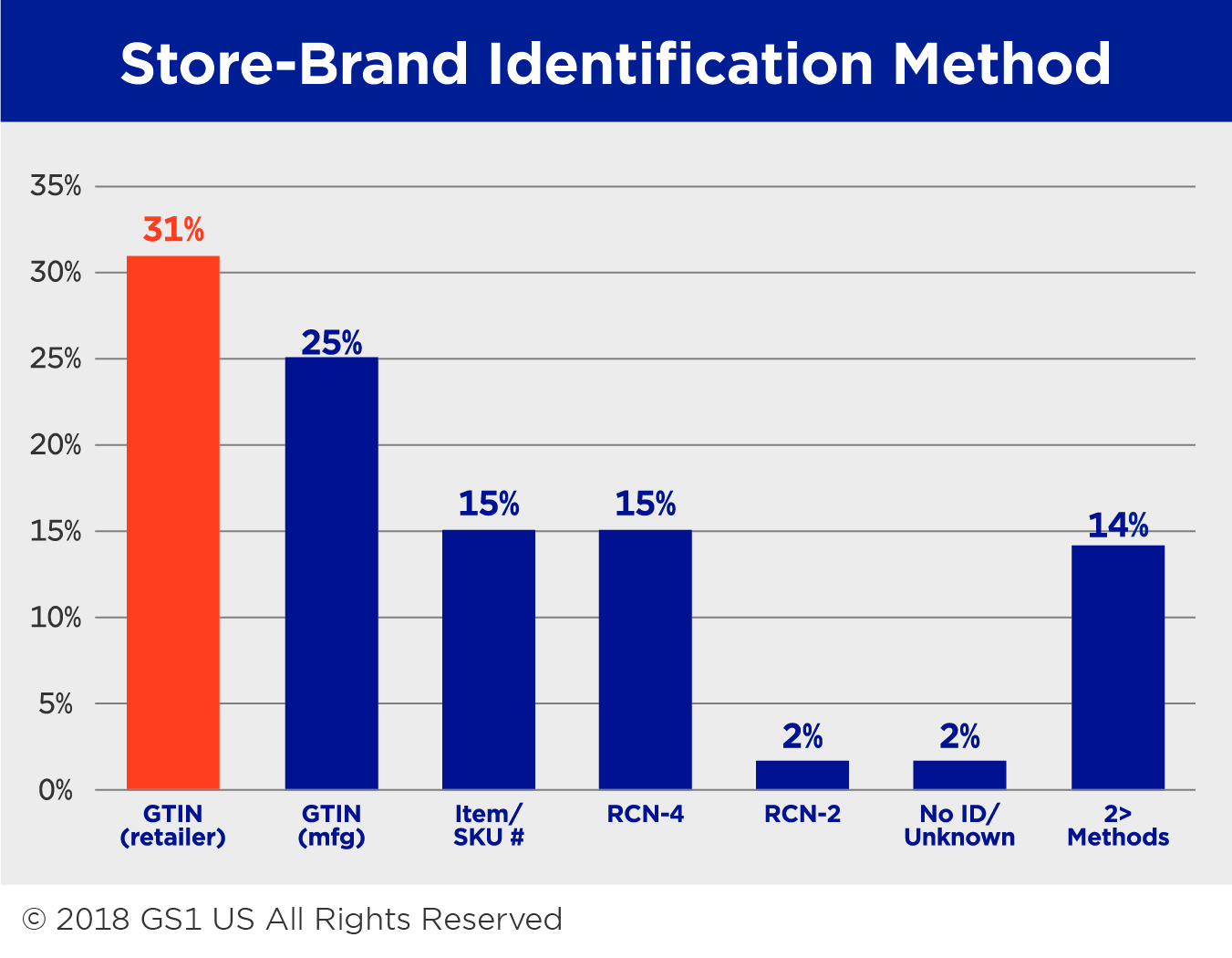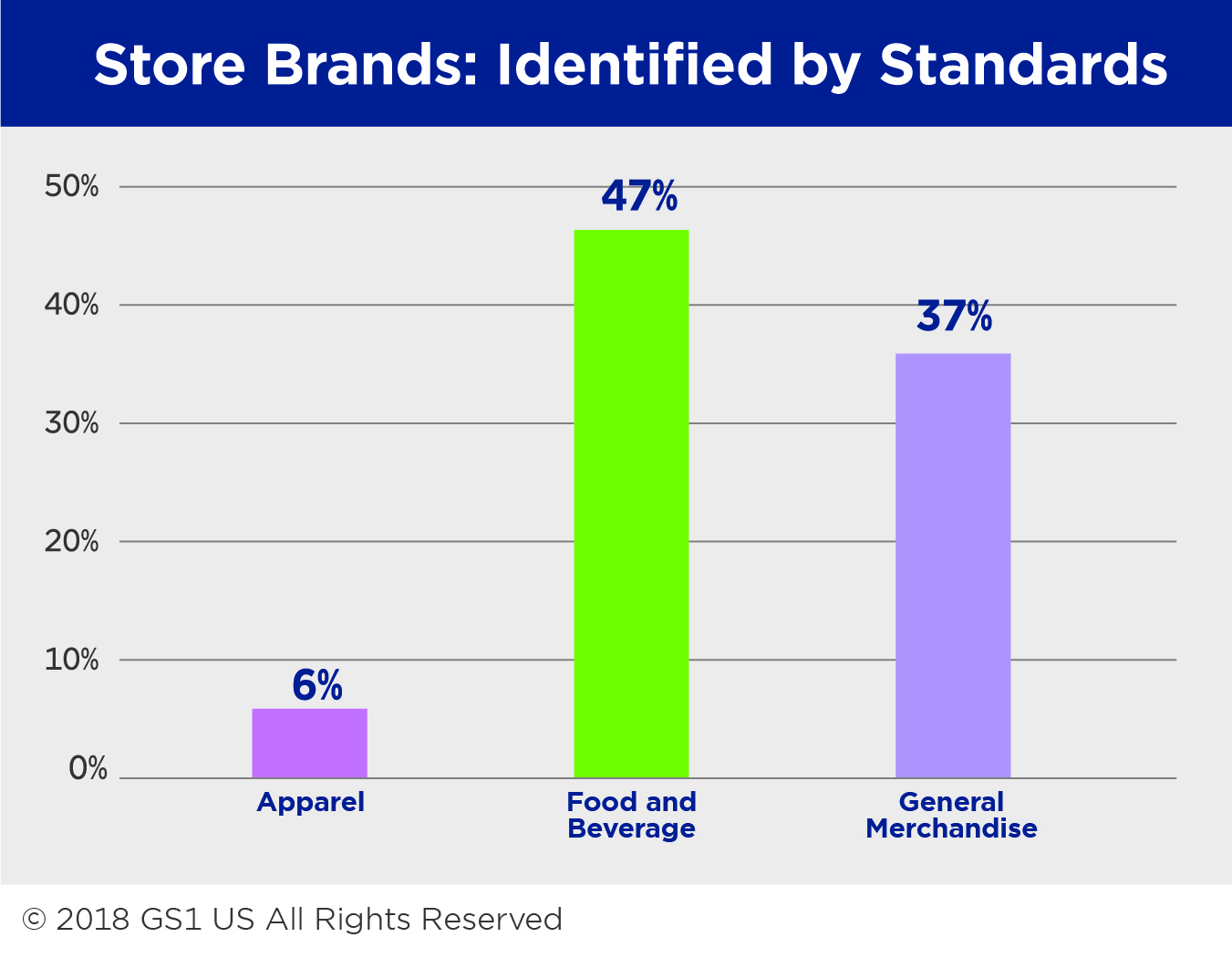Store Brands Need Standardized Product Identification To Compete Online
By Rich Richardson, GS1 US

One of the many significant changes taking place in retail is store brand — or private label — product sales are showing impressive growth compared with traditional and national brands. Many retailers are not currently set up to optimize online sales of their store brands and are missing an opportunity to take advantage of the power of private label sales via digital channels. By implementing GS1 Standards and accurately assigning GS1 Global Trade Item Numbers (GTINs) — commonly known as U.P.C.s — to their store brand products, they can deliver a consistent, omni-channel shopping experience, grow their sales, and improve customer satisfaction.
Private Label Comes Into Its Own
Store brands have come a long way since their humble beginnings as “generics” in black and white packaging. Today, retailers are using their own brands to differentiate themselves from the competition, providing customers with unique experiences and product offerings that drive consumer loyalty.
 Nielsen reports that in 2017, store brands accounted for an estimated $122.3 billion in sales and other research indicates store brand sales increased 10 percent in mass retail channels. Private label products offer retailers an opportunity to improve their operating margins and expand their portfolio, while consumers appreciate the availability of exclusive products at reasonable prices.
Nielsen reports that in 2017, store brands accounted for an estimated $122.3 billion in sales and other research indicates store brand sales increased 10 percent in mass retail channels. Private label products offer retailers an opportunity to improve their operating margins and expand their portfolio, while consumers appreciate the availability of exclusive products at reasonable prices.
Moving Beyond The Physical Store
Store brands have been traditionally limited to sales within the four walls of brick and mortar stores but that is changing rapidly. Historically, retailers often use their own, proprietary product identification (such as stock keeping units [SKUs], manufacturer part numbers [MPNs] or number system 4) to track their store brand products. While this method may work inside a retailer’s closed supply chain, it doesn’t support accurate and efficient online sales. Proprietary product numbers become meaningless outside their closed-loop system. Instead, a common language is needed to enable successful product searching, availability, and information for a satisfactory consumer shopping experience in omni-channel sales.
Accurate Product Information Enables A More Satisfying Shopper Experience
Part of the reason major national brands have enjoyed success against store brand products despite comparatively higher prices is the level of visibility provided by global product identification standards. Since consumers are increasingly exploring e-commerce options, it is critical for store brand products to be discoverable outside the confines of the store so that shoppers can find, learn about, and purchase the correct product online.
By moving away from outdated proprietary product identification systems and assigning GTINs to their private label products, retailers can provide consistent product information across both digital and physical supply chains. GTINs also help retailers maintain good data, streamlining analytics, sales, inventory, and planning.
Current State Of Store Brand Identification
In late 2017, GS1 US researchers investigated the extent to which retailers have adopted GS1 Standards for private label product identification. The study targeted 87 top U.S. retailers and nearly 1,400 individual brands, divided into three categories: General Merchandise (48 percent), Apparel (28 percent), and Food and Beverages (24 percent). The research found inconsistent identification practices across store brands, and some were even identified within a single brand using two different methods (e.g., both GTIN and SKU).
 Overall, less than a third of private label brands used GS1 Standards to identify products. The Food and Beverage category showed the highest adoption at 47 percent, while the General Merchandise and Apparel categories fell much lower (37 percent and 6 percent, respectively).
Overall, less than a third of private label brands used GS1 Standards to identify products. The Food and Beverage category showed the highest adoption at 47 percent, while the General Merchandise and Apparel categories fell much lower (37 percent and 6 percent, respectively).
The good news is hundreds of retailers are already leveraging GS1 product identification standards to enable product and supply-chain visibility, and have been for more than 40 years. The grocery industry in particular was the first to adopt the U.P.C. barcode in 1974 for faster checkout and better inventory management. By adopting these same product identification standards, private label brands have an opportunity to leverage these long-established best practices to improve availability, discoverability, supply-chain efficiencies, and even customer loyalty.
Cross-Channel Product Information Is Essential To Meet Buyers Where They Are
In an age where consumers expect to find all the products and information they need in one place, it’s more important than ever for private label brands to accurately fill both physical and digital shelves. With GS1 Standards, store brands can succeed in the global marketplace, providing consumers with better product information while enhancing internal business processes. Retailers that take advantage of unique product identification have a better shot at competing against national name brands in the digital age.
About The Author
Rich Richardson is the Vice President, Standards Management for GS1 US and has more than 30 years of technology, supply chain, ecommerce, operations, and procurement experience across multiple industries. He collaborates with retail industry stakeholders to address complex commerce business challenges through the adoption and online use of GS1 Standards. For more information about the organization, visit www.gs1us.org.
